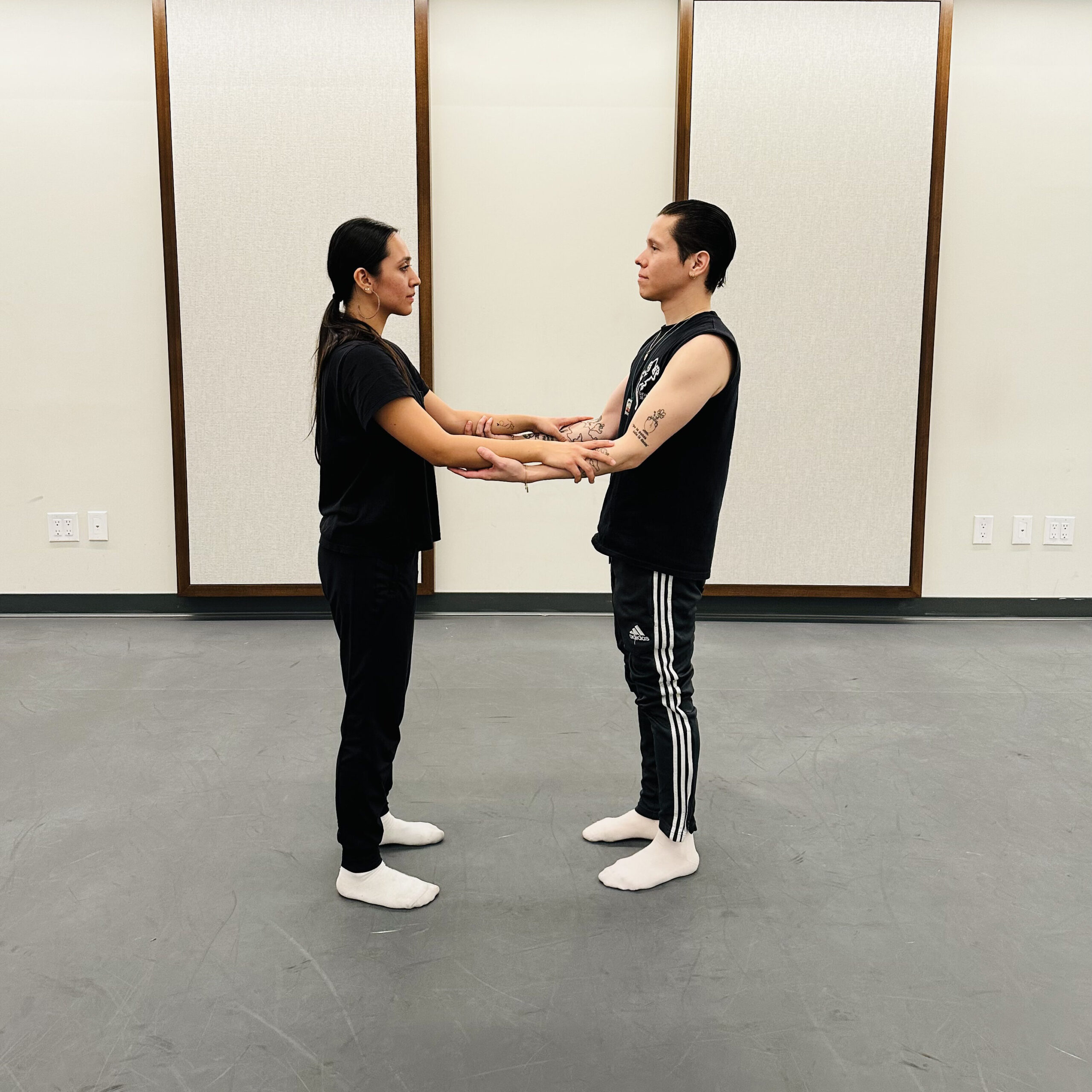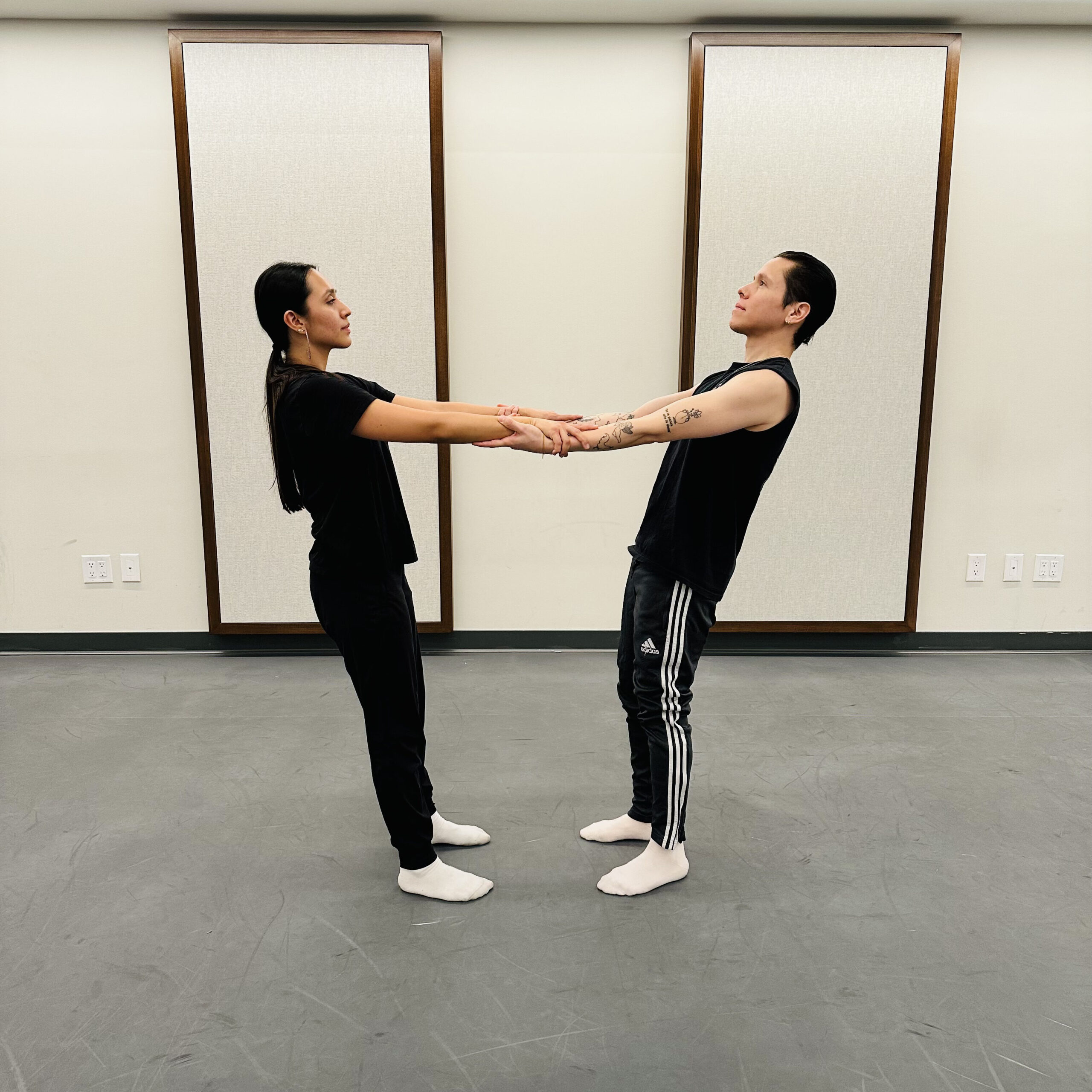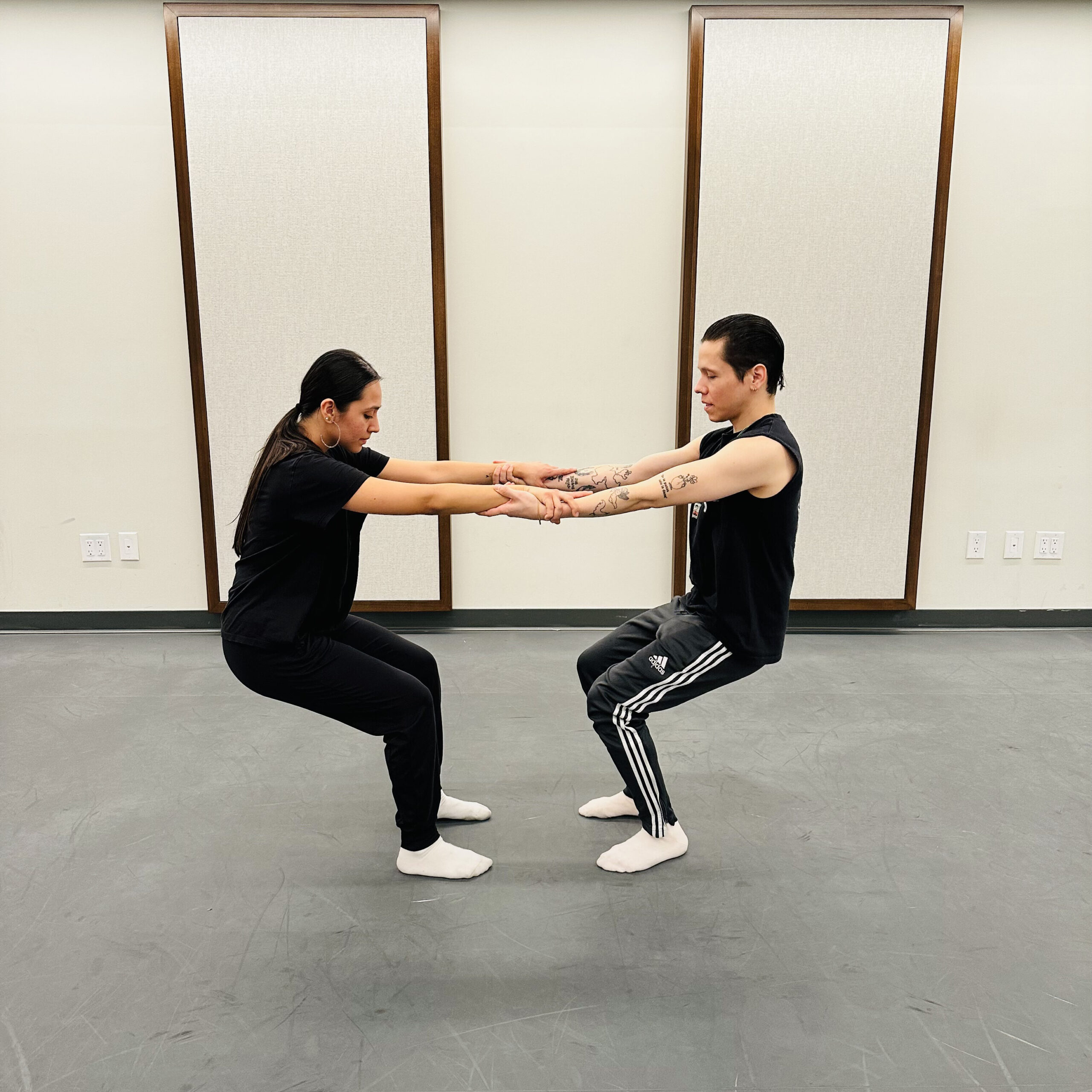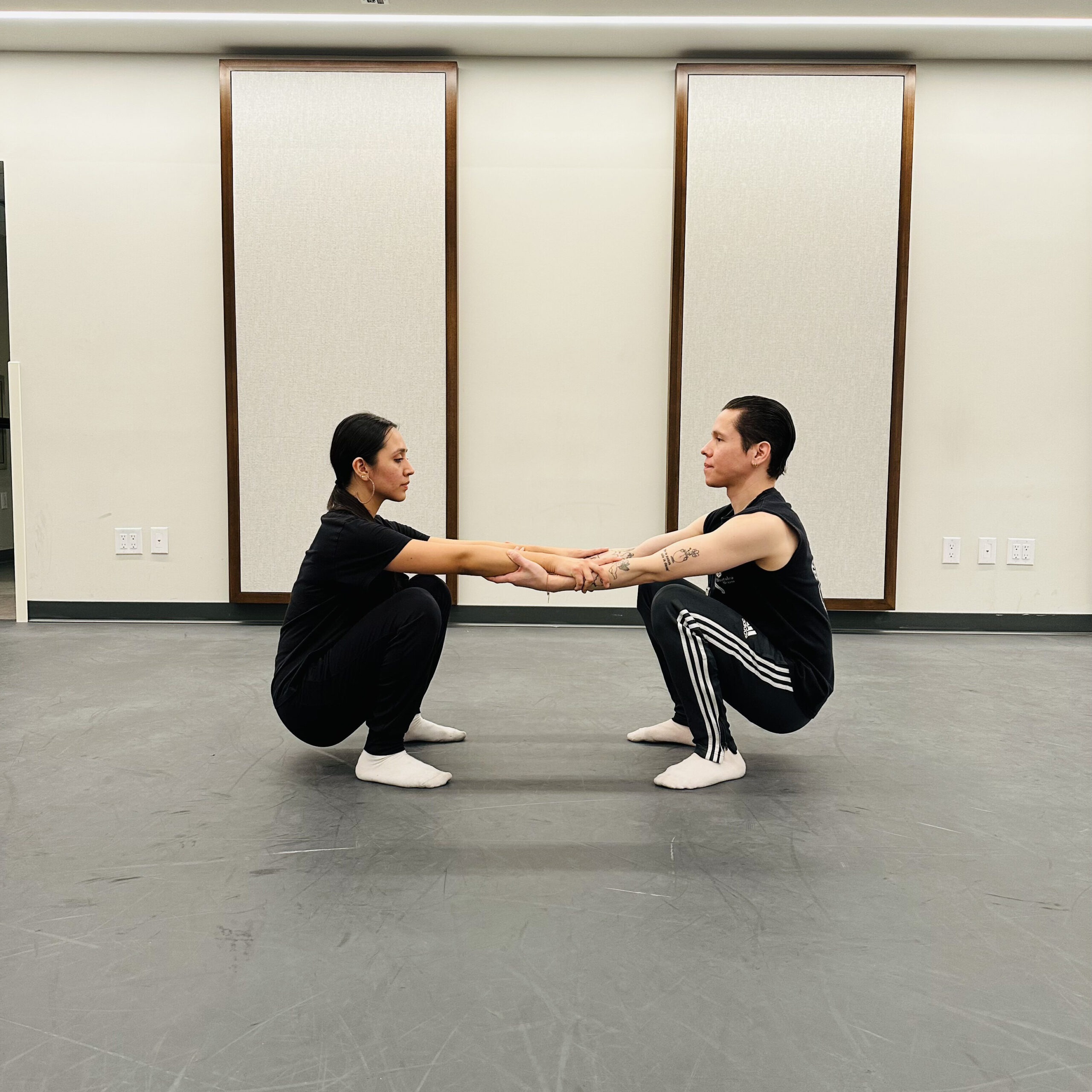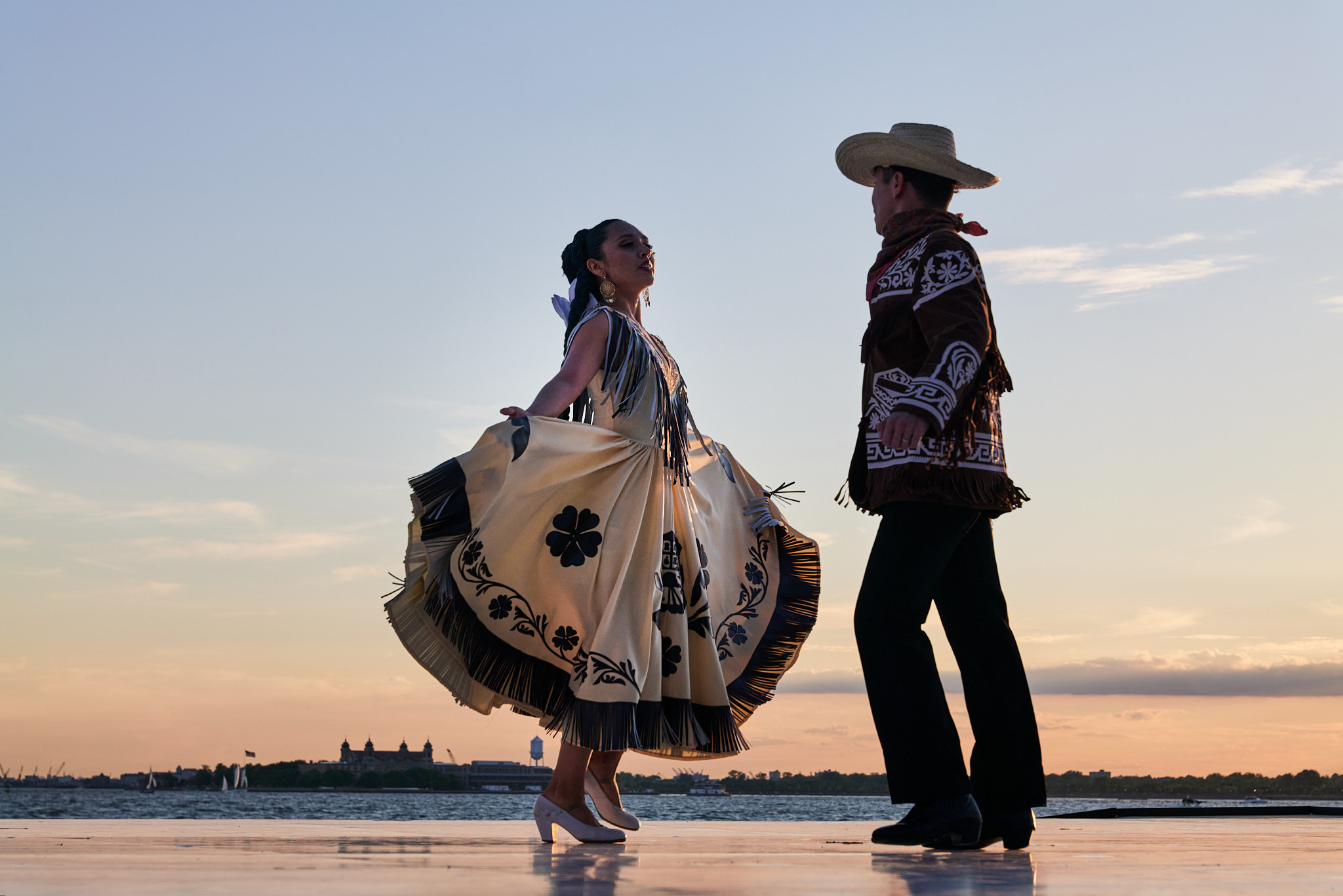How Working on Communication Skills Can Strengthen Your Partnering
Successful partnering requires trust, honesty, and connection. A productive partnership doesn’t usually come right away, but is instead developed through thoughtful and intentional work. Communication skills are essential. Whether you’re touching base after class or rehearsal, in the midst of a pas de deux on opening night, or anytime in between, there are many strategies to share your feelings and be heard.
Working With Words
Before, during, or after class or rehearsal, feel free—and even encouraged—to talk through your needs with your dance partner. Discuss what’s going smoothly, what needs improvement, and how they can provide optimal support. Open communication not only establishes a foundation for successful collaboration but also makes it easier to stay on the same page onstage.
Mikaela Santos, a dancer with Atlanta Ballet, explains that it’s important to communicate discomfort with your partner, even though it can be daunting to offer feedback that could be perceived as negative. “I’ve definitely had times when something is uncomfortable for me and I didn’t have the guts to tell my partner,” she says. “Tell your partner straight up, be honest with them, and just tell them ‘Can we work this out?’ ”
If your partner is having a hard time understanding your point of view, Martín Rodríguez, co-founder of Ballet Nepantla, a New York City–based contemporary Mexican folklórico company, says that using metaphors or simple phrases can help alleviate confusion.
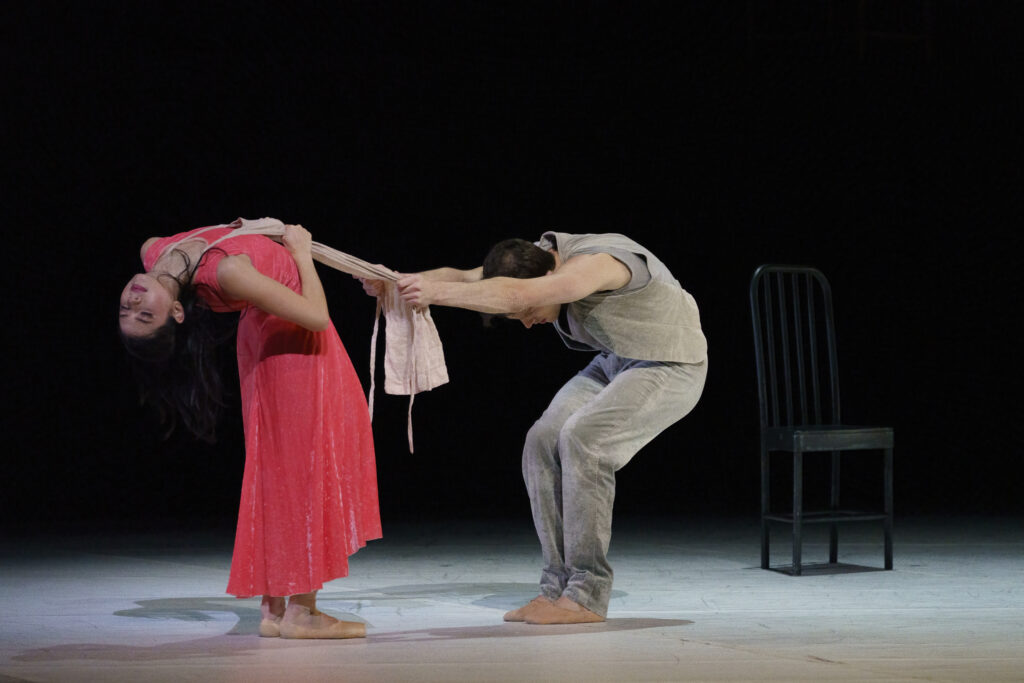
Let the Body Talk
Because it’s less easy to talk onstage, dancers often rely on nonverbal communication methods like touch, pressure, and eye contact to speak to their partner without making a sound. Developing these communication skills can prove a bit more elusive than verbal language, though, so it’s important to start working on them before opening night.
To familiarize yourself with using weight and resistance as a form of communication, Rodríguez and his dance partner Maria Gracia Perez Munoz, also a performer with Ballet Nepantla, recommend a simple weight-sharing exercise in which dancers hold each other’s arms while leaning away from one another (see sidebar). Perez Munoz notes that this exercise can also be done by leaning into your partner instead of leaning away. To level up, experiment with varying the points on the body from which you apply and receive pressure. “Start looking for points of support, where both bodies touch,” she explains. “You can either slide through the skin or roll, which means changing the points of support all the time.”
The eyes also can serve as a powerful means of communication for dancers onstage. Once you establish a strong connection with your partner, eye contact becomes a way to deepen that bond. “You look to the eyes first to know what you’re going to do, like a telepathic communication,” Perez Munoz explains. “And then the body does something.” Simple in-class exercises, such as maintaining eye contact while working on improvised or choreographed phrases, can help bolster this skill.
Listening In
Whether your communication is verbal or nonverbal, it’s important to actively listen to your partner, tuning in to their needs, preferences, and ways of moving. According to Patric Palkens, one of Santos’ partners at Atlanta Ballet, listening can mean anticipating your partner’s choreography, so you can ensure you’ll be there to support them when they need it. Using the context of a classical ballet pas de deux, he explains: “Because you’re standing behind her and she doesn’t turn around to watch you, you have to watch her.”
Listening to your fellow dancer will also help build trust, which is an essential part of a successful partnership. Perez Munoz says exercises like trust falls can help with this, and she also recommends an exercise where one partner leads the other through space. “A person closes their eyes, and the other person is leading them through space by putting a hand on their back and holding the other,” she says, explaining that it is the responsibility of both the leader and the follower to make sure they stay in contact.
Palkens, Santos, Rodríguez, and Perez Munoz all agree that being a good partner is a process. It takes time to learn how to move with and anticipate the needs of another dancer, especially while also navigating the myriad demands of a dance performance. “If you don’t click in the beginning, and the communication doesn’t happen naturally, I think that with time you adjust,” Perez Munoz says. “Once you get to know what your partner likes, then you’re going to be able to lead or follow in a way they feel comfortable with.”
Sharing Weight
Ballet Nepantla dancers Martín Rodríguez and Maria Gracia Perez Munoz recommend this exercise to get comfortable communicating with your partner nonverbally.
